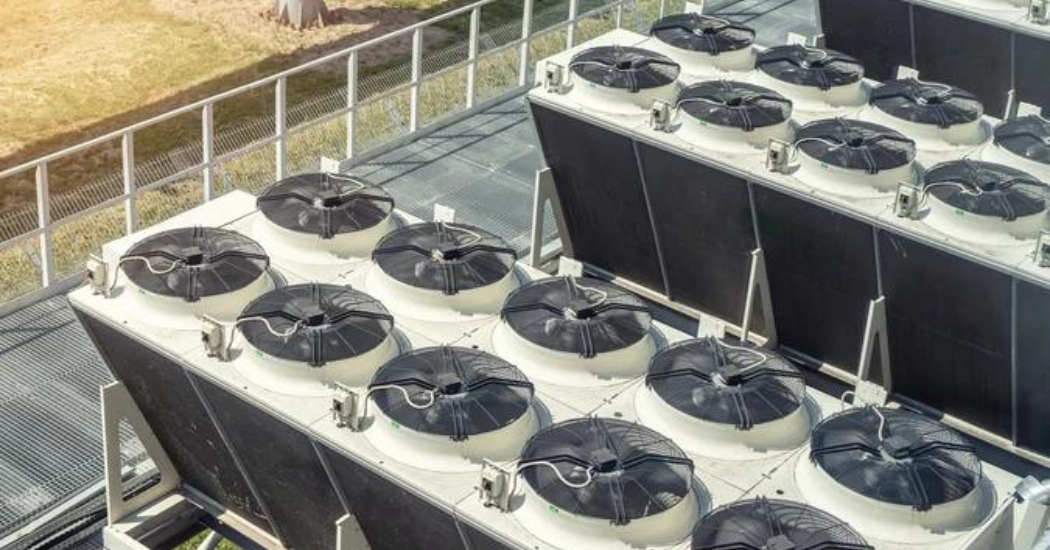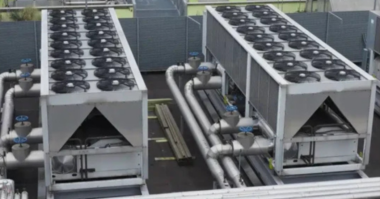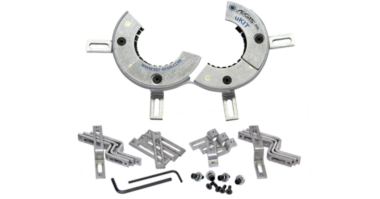For the past few decades, the use of variable frequency drives (VFDs) in the motors of heating, ventilation, and air-conditioning (HVAC) systems has become increasingly common to manage energy consumption. Compared to electric motors that run at a constant speed, VFD-equipped motors offer significant advantages, often consuming 50 percent or less of the energy motors use when run direct on line. The savings become even more apparent for large commercial and industrial facilities, where energy efficiency impacts a business’s bottom line. In simple terms, a VFD controls the rotational speed of an alternating current (AC) electric motor by adjusting the frequency of the current flowing into the motor. To understand what VFDs in HVAC systems do, however, it’s important to look at how they operate within these systems.
What is VFD in HVAC Systems?
Depending on where in the world a structure is, HVAC systems in built environments normally only operate at peak load for short periods throughout the year. VFDs are often installed in these systems to regulate the running of an HVAC system’s compressors, fans, pumps, and other electrical components to improve a building’s energy efficiency. The VFD will adjust the speed of the motors within the system according to the operational requirements to reduce energy expenditure.
In the US, a report put out in 2013 by the Department of Energy (DOE) reported that HVAC accounted for 93 percent of all energy use by electric motors in commercial settings. VFDs are used to adjust motor speed to curb energy consumption to improve energy efficiency in built environments.
Advantages of VFDs in HVAC Systems
When initially introduced for HVAC applications, VFDs tended to increase noise levels, took up substantial space, and were limited by motor power. However, these impediments are no longer factors with recent technological advancements. The primary advantage for larger facilities using VFDs for HVAC applications is their ability to substantially lower energy use. For centrifugal pumps and fans, lowering HVAC motor speed by 25 percent will reduce energy use by about 60 percent. Similarly, when the motor driving the pump or fan is reduced by 50 percent, energy usage drops nearly 90 percent.
Using a VFD in an HVAC system can also extend the lifetimes of the system’s components. With the motor running at less than full speed, VFD-enabled HVAC systems experience less wear and tear over time. Additionally, HVAC motors connected to a VFD aren’t started or stopped as frequently, a function that causes considerable wear, and when they are, they don’t draw high startup current. Instead of starting the motor at full speed, the VFD slowly ramps up the motor speed. This also causes less stress on motor windings and other HVAC parts downstream.
VFDs in HVAC systems also provide greater control over building’s operation. For instance, a tall multistory building often uses booster pump systems to ensure adequate water pressure at every level. With conventional booster pumps, water pressure can’t be maintained precisely. Conversely, booster pump systems controlled by a VFD will be able to maintain precise water pressure while also decreasing the system’s energy requirements. With chiller plants, a VFD will often be able to regulate compressor speed to maintain temperature set points for both water and air supply.
By offering greater control, a VFD allows for more exact adjustments to the speed at which HVAC motors drive compressors, fans, and pumps to alter the airflow throughout the system. This, in turn, improves indoor conditions for occupants, allowing greater control of temperature and air pressure, carbon dioxide, and humidity levels through all levels of a building. While VFDs are used extensively to drive compressors, fans, and pumps, they can also report electrical parameters like the current and power draw, frequency, speed, and torque of the motor. These indicators can then be used for diagnostics and to detect faults, which improves an HVAC system’s reliability and reduces maintenance expenses.
In summary, VFDs offer the following advantages:
- Soft start capabilities that decrease inrush current to reduce the motor’s electrical and mechanical stress while enhancing reliability
- Regulating motor speed in a more fluid manner, without jerks or steps
- Reducing power consumption considerably by supplying only as much power as needed
- Improving the power factor of the motors
- Enabling monitoring systems to improve efficiency and performance further
With all these advantages, it’s no surprise that VFDs in HVAC systems are increasingly being installed. Whether it’s in a new or existing HVAC system, the additional cost of a VFD can see a return on investment within a relatively short time, generally under three years.
For What is VFD in HVAC Specifically Used in Facilities?
HVAC systems in commercial or industrial facilities rarely need to operate under peak load conditions, though they’re designed with this in mind. The system design of commercial and industrial HVAC units ensures that the motor can handle these peak loads. Due to this, HVAC systems that use motors without a VFD will use considerably more energy, particularly for the system’s pumps and fans.
Problems VFDs Cause in HVAC Systems
With energy efficiency becoming a priority throughout the world, VFDs have been touted as a means to easily lower electricity usage in many facilities by allowing motors to run at below full speed. Often, fans and pumps in HVAC systems run constantly, so using a VFD will ensure the motor draws less power when the demand is reduced. Though motor speed can be controlled by a throttling mechanism, this is wasteful, as the excess power put out by the motor is just converted into heat. VFDs are much more efficient. For example, cutting the speed of a fan in half reduces the horsepower needed by a factor of eight.
This means a 100-horsepower motor driving a fan would require just over 12 horsepower when fan speed is halved, resulting in a considerable reduction in energy expenditure. These savings can exceed 30 percent. While this is a boon for facility managers and the companies they work with, VFDs also have drawbacks. When running at any speed, VFDs can produce stray currents that lead to bearing damage that shortens a motor’s life. This can potentially eliminate any savings the VFD provides, as costs for downtime and repair or replacement parts eat into it. For this reason, HVAC systems need protection for their motor bearings.
The Need for Shaft Grounding in HVAC Systems
It’s never been in dispute that VFDs save energy, yet for many years, the premature failure of bearings in VFD-enabled motors often wasn’t correctly diagnosed. After much testing, it was determined that the erosion of VFD-controlled motors’ bearings resulted in electrical damage caused by a combination of fast voltage rise times, high peak voltages, non-sinusoidal voltage and current output, and parasitic capacitance within the motor. As modern motors have sealed motor bearings to prevent contaminants from entering, it is likely that the most common cause of bearing failure in motors on VFD is now electrical bearing damage.
The National Electrical Manufacturers Association (NEMA) promotes standards highlighting this need to provide additional bearing protection for motors equipped with a VFD. There are several ways in which to protect motor bearings. One method is to use ceramic bearings to prevent current from passing through, though these are expensive. This can also result in shifting the electrical damage to the coupled equipment, as stray current still seeks a path to ground. Another method entails insulating the bearings, although this has similar drawbacks to those of ceramic bearings. Insulated bearings also occasionally suffer electrical damage to the uninsulated race.
AEGIS® Shaft Grounding Rings
Using a grounding ring is the best option to protect HVAC motor bearings. The AEGIS® Shaft Grounding Ring, manufactured by Electro Static Technology, is specially designed to channel current from the motor shaft to the frame (and then to ground). Its conductive microfibers provide a lower-resistance path to the ground than the motor bearings. In this way, the motor bearings are protected, and other components connected to the motor are, too. AEGIS rings provide full protection for small motors, 100 hp (75 kW) or less. Larger motors additionally require one insulated bearing at the opposite end from the ring, to interrupt circulating current.
With millions of installations, the AEGIS® ring can be used in air handling units indoors and outdoors, chilled water pumps, chillers, compressors, condensation fans, fan walls, rooftop systems, ventilation fans, and other HVAC applications.





Comments